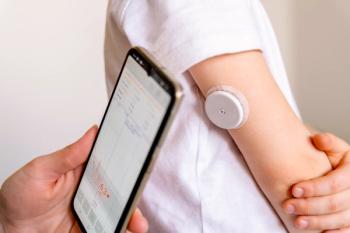
Summer Skin Protection: Pharmacist's Guide to Sunscreen and Aftercare
Pharmacists can empower their community with essential knowledge for summer skin protection to protect against skin cancer.
Although skin damage from the sun can happen at any time of the year, the sun reaches its highest point between May and August in the United States.1,2 As a result, ultraviolet radiation (UVR) is particularly intense during these months because the rays have a shorter distance to travel to reach Earth.1
Moreover, outdoor activities increase during the summer, further raising the risk of sun-damaged skin. A progress report from cancer.gov reveals that more than 33,000 sunburns leading to serious emergency hospitalizations are reported annually.3
Utilizing sunscreen diligently is one of the most effective measures for preventing sunburns and safeguarding ourselves from the sun, alongside minimizing exposure. Pharmacists working in community settings should possess the necessary knowledge and skills to advise patients on selecting suitable sunscreens and providing guidance on after-sun care.
Let's start by exploring the different types of UV rays that reach the Earth: UVA and UVB (UVC is absorbed by the Earth's atmosphere/ozone layer).2,4 UVA rays have longer wavelengths and can penetrate deeply into the dermis layer of the skin.5 When UVA rays reach the dermis, they attack DNA and modify the collagen and elastin proteins in the skin, resulting in wrinkles and sagging.4,6
On the other hand, UVB rays have shorter wavelengths and primarily affect the superficial layer of the skin, known as the epidermis.5 These rays are commonly associated with skin cancer, sunburns, and tanning.4,5
When UVB rays reach the epidermis, the skin's first line of defense, melanocytes (cells responsible for skin pigment), attempt to protect the skin by absorbing the rays and producing more melanin.4,5 However, with excessive exposure, the UVB rays overpower the protection melanocytes can provide, leading to sun damage in the form of sunburns, skin tans, and skin cancers, with melanoma being the most common type.4,5
There are 2 primary categories of sunscreen ingredients: chemical and physical. Chemical sunscreens function by absorbing the UV rays from the sun, converting the energy into heat, and then releasing it from the body.6
Common ingredients found in chemical sunscreens include avobenzone, octinoxate, and oxybenzone.6,7 On the other hand, physical or mineral sunscreens work by creating a physical layer on the surface of the skin, reflecting the sun's UV rays away.6 The FDA has approved only 2 physical sunblock ingredients: zinc oxide and titanium dioxide.6,7
When selecting sunscreen, considerations should be made based on individual needs. Chemical sunscreens are absorbed into the skin and may have a higher potential for irritation.
Therefore, physical sunscreens may be preferred for individuals with sensitive skin, infants, and children, and pregnant or nursing mothers.6,7 Physical sunscreen, with its thicker consistency, can also provide added moisturization, making it suitable for individuals with dry skin.6,7
However, due to their lighter texture and less greasy formulation, some individuals may prefer chemical sunscreens over physical ones. Additionally, chemical sunscreens are less likely to leave a white cast on the skin,6,7 although it's worth noting that many physical sunscreens now offer tinted formulations that effectively reduce the appearance of any white residue.
Furthermore, because chemical sunscreens are absorbed into the skin, they are generally more water- and sweat-resistant compared to physical sunscreens, making them preferable for activities involving perspiration or water exposure.6,7 When educating patients about sunburn prevention and sun protection, it is crucial to opt for a broad-spectrum sunscreen that provides protection against both UVA and UVB rays with a sun protection factor (SPF) of at least 15-30.4,5,7-10
SPF indicates the efficacy of the sunscreen in preventing sunburn compared to unprotected skin.8,9 However, it's important to note that no sunscreen is completely waterproof. Therefore, it is necessary to stress the significance of reapplying sunscreen every 2 hours and after swimming or sweating to maintain optimal protection.4,5
Consistently following these practices will help ensure that patients are effectively safeguarding their skin from the damaging effects of the sun's rays. In the unfortunate event of a sunburn, it is crucial to take immediate action as soon as the sunburn is identified. Although sunburns generally heal on their own without specific treatment, there are measures available to alleviate the associated pain and discomfort.
The initial step should always be to seek shade and cool down the affected area by taking a refreshing bath or shower.10-12 Following the bath, applying a cooling moisturizer containing aloe, soy, or calamine to damp skin can provide relief.10-12
Some patients may find relief from OTC medications such as acetaminophen, ibuprofen, or aspirin.10-12 For cases in which certain areas are particularly sensitive or more irritated, the use of OTC hydrocortisone cream may be appropriate.10,11
Additionally, increasing water intake is important as sunburns tend to draw water toward the burn and away from the body.10-12 By educating patients about these after-sun care steps, pharmacists can empower them to effectively manage the discomfort and promote the healing process following a sunburn.
Preventing sun damage is crucial for maintaining the short- and long-term health of the skin. The use of sunscreen stands out as one of the simplest and most effective ways to shield against harmful UV rays.
Pharmacists working in community settings are in a prime position to educate patients about the importance of sunscreen and guide them in selecting the most suitable options for their specific needs. By providing comprehensive information on the different components of sunscreen, pharmacists can empower patients to make informed decisions about their sun protection routine.
Ultimately, the most effective sunscreen is the one that patients will commit to using correctly. By educating patients on sunburn prevention and after-sun care, pharmacists can contribute significantly to the overall health and safety of their community members.
About the Author
Sukeina Nasser, PharmD, CPh, PACS, is a clinical pharmacist in Detroit, MI.
References
- EPA. February 2, 2023. Accessed June 12, 2023.
https://www.epa.gov/sunsafety/sun-safety-monthly-average-uv-index . - The Sun, UV and You: A Guide to Sunwise Behavior. U.S. Environmental Protection Agency, Air and Radiation; 2006.
- Sunburn. April 2022. Accessed June 12, 2023.
https://progressreport.cancer.gov/prevention/sunburn#field_description - Sun Safety. Johns Hopkins Medicine. August 8, 2021. Accessed June 12, 2023. https://www.hopkinsmedicine.org/health/wellness-and-prevention/sun-safety.
- Sun Safety. American Skin Association. Accessed June 12, 2023. https://www.americanskin.org/resource/safety.php.
- Bell. Should I use a chemical or physical sunscreen? Center for Surgical Dermatology. July 30, 2022. Accessed June 12, 2023. https://www.centerforsurgicaldermatology.com/should-i-use-a-chemical-or-physical-sunscreen/.
- Moon M. Skincare faqs: Chemical vs Physical Sunscreen. U.S. Dermatology Partners. September 28, 2022. Accessed June 13, 2023. https://www.usdermatologypartners.com/blog/physical-vs-chemical-sunscreen/.
- Foundation SC. Ask the expert: Does a high SPF protect my skin better? The Skin Cancer Foundation. May 23, 2023. Accessed June 13, 2023. https://www.skincancer.org/blog/ask-the-expert-does-a-high-spf-protect-my-skin-better/.
- Center for Drug Evaluation and Research. Sun Protection Factor (SPF). U.S. Food and Drug Administration. July 14, 2017. Accessed June 13, 2023. https://www.fda.gov/about-fda/center-drug-evaluation-and-research-cder/sun-protection-factor-spf.
- Sunburn. The Skin Cancer Foundation. January 28, 2022. Accessed June 13, 2023. https://www.skincancer.org/risk-factors/sunburn/.
- How to treat Sunburn. American Academy of Dermatology. Accessed June 13, 2023. https://www.aad.org/public/everyday-care/injured-skin/burns/treat-sunburn.
- Sunburn. Mayo Clinic. October 8, 2022. Accessed June 13, 2023. https://www.mayoclinic.org/diseases-conditions/sunburn/diagnosis-treatment/drc-20355928.
Newsletter
Stay informed on drug updates, treatment guidelines, and pharmacy practice trends—subscribe to Pharmacy Times for weekly clinical insights.




















































































































































































































